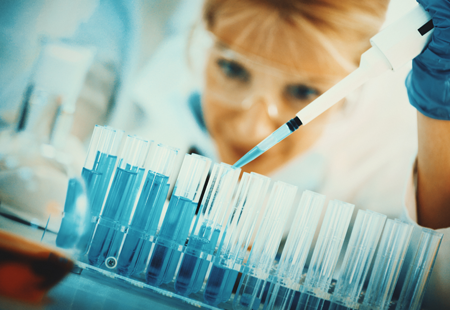Dried Blood Spot (DBS) sampling has revolutionized bioanalysis by enabling efficient, low-volume blood collection and storage.
CAMAG offers a comprehensive collection of scientific publications that delve into the diverse applications and advancements of DBS sampling, providing valuable insights for researchers and practitioners.

Scientific Publications∙June 1, 2021
Fully Automated Drug Screening of Dried Blood Spots using Online LC-MS/MS Analysis
A new and fully automated workflow for the cost effective drug screening of large populations based on the dried blood spot (DBS) technology

Scientific Publications∙June 1, 2021
Dried blood spots for anti-doping: Why just going volumetric may not be sufficient
In addition to the naturally existing HCT fluctuation in a standard population, these fluctuations in an athlete population are more pronounced. Therefore, additional efforts for anti-doping testing may be required to ensure reliable and quantitative DBS analysis that hold their position in court.

Scientific Publications∙June 1, 2021
Automated high-throughput analysis of tramadol and O-desmethyltramadol in dried blood spots
The World Anti-Doping Agency (WADA) and the International Testing Agency (ITA) recently announced the development and implementation of dried blood spot (DBS) testing for routine analysis in time for the 2022 Winter Olympic and Paralympic Games in Beijing.

Scientific Publications∙June 1, 2021
The application of fully automated dried blood spot analysis for liquid chromatography-tandem mass spectrometry using the CAMAG DBS-MS 500 autosampler
In the past decade, dried blood spot (DBS) sampling has been used increasingly for microsampling in various fields. This is predominantly driven by the significant advantages DBS offers regarding simple sample retrieval and shipment, combined with increased analyte stability.

Scientific Publications∙June 1, 2021
Fully automated dried blood spot sample handling and extraction for serological testing of SARS-CoV-2 antibodies
At the beginning of 2020, an outbreak of severe acute respiratory syndrome coronavirus 2 (SARS-CoV-2) reached pandemic dimensions. Throughout the event, diagnostic tests function as an essential tool for understanding, mitigating, and implement strategies to curb and reduce infections.

Scientific Publications∙June 1, 2021
Variation in the relative isomer abundance of synthetic and biologically derived phosphatidylethanols and its consequences for reliable quantification
Phosphatidylethanol (PEth) in human blood samples is a marker for alcohol usage. Typically, PEth is detected by reversed-phase liquid chromatography coupled with negative ion tandem mass spectrometry, investigating the fatty acyl anions released from the precursor ion upon collision-induced dissociation (CID).

Scientific Publications∙June 1, 2021
Fully Automated Forensic Routine Dried Blood Spot Screening for Workplace Testing
In this study, we describe the transfer of a new and fully automated workflow for the cost-effective drug screening of large populations based on the dried blood spot (DBS) technology.

Scientific Publications∙June 1, 2021
Validation of an Automated Extraction Procedure for Amino Acids and Acylcarnitines
A certified reagent kit for newborn screening was transferred on a fully automated dried blood spot platform. The dried blood spot cards are directly eluted and the extract is online guided to tandem mass spectrometry instrument, where the amino acid and acyl carnitine panel is detected. The method takes 2 minutes per sample and requires no human interaction for up to 500 samples. The method is fully standardized through the automation and the usage of only certified consumables and reference material. The manual reagent kit was first modified to fit the automated platform, secondly validated and third, successfully transferred into a routine newborn screening laboratory.

